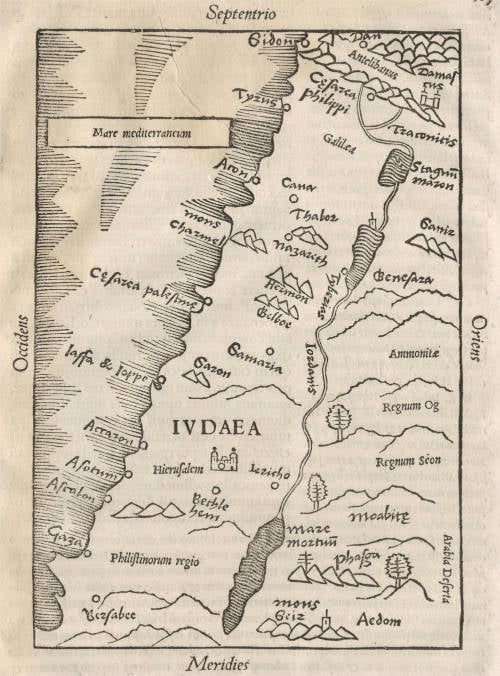Leen Helmink Antique Maps
Old books, maps and prints by Gaius Julius Solinus
Gaius Julius Solinus (3rd century A.D.)
GAIUS JULIUS SOLINUS, Latin grammarian and compiler, probably flourished during the first half of the 3rd century A.D. He was the author of Collectanea rerum memorabilium, a description of curiosities in a chorographical framework. Adventus, to whom it is dedicated, is identified with Oclatinius Adventus, consul A.D. 218. It contains a short description of the ancient world, with remarks on historical, social, religious and natural history questions. The greater part is taken from Pliny's Natural History and the geography of Pomponius Mela. According to Mommsen, Solinus also used a chronicle (possibly by Cornelius Bocchus) and a Chorographia pliniana, an epitome of Pliny's work with additions made about the time of Hadrian. Schanz, however, suggests the Roma and Pratum of Suetonius. The Collectanea was revised in the 6th century under the title of Polyhistor (subsequently taken for the author's name). It was popular in the middle ages, hexameter abridgments being current under the names of Theodericus and Petrus Diaconus.
The commentary by Saumaise in his Plinianae exercitationes (1689) is indispensable; best edition by Mommsen (1895), with valuable introduction on the MSS., the authorities used by Solinus, and subsequent compilers. See also Teuffel, Hist. of Roman Literature (Eng. trans., 1900), 389; and Schanz, Geschichte der romischen Litteratur (1904), iv. 1. There is an old English translation by A. Golding (1587).
(Encyclopedia Britannica).
"Caius Julius Solinus was a Roman who lived in the third or fourth century AD, possibly worked as a grammarian, and is most widely recognized for his work, the Polyhistor. Possibly written sometime in the middle of the third century, the Polyhistor, alternatively known as the Collectanea rerum memorabilium and De situ orbis, relied heavily on Pliny's Natural History as well as Pomponius Mela's De situ orbis. The work touches on the natural history and geography of the regions known to the Roman Empire, as well as religious and social matters. Solinus's Polyhistor remained popular through the Middle Ages and Renaissance, particularly for its geographical content. The Polyhistor was first translated into English in 1587 by Arthur Golding."
(Clements Library)





